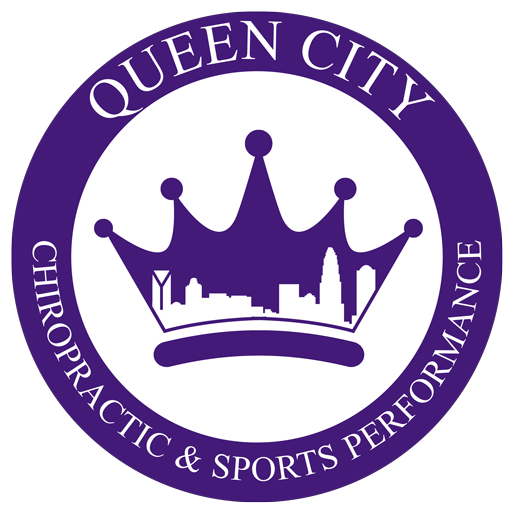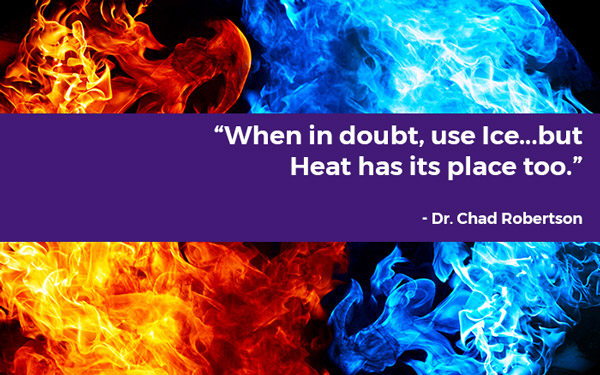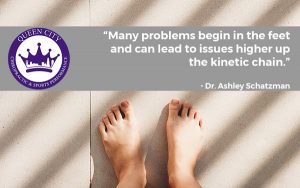This is a common question that comes up frequently in conversations at Queen City Chiropractic & Sports Performance. Most people think to use ice when they injure an area of the body but most don’t think of the benefits that topical heat can provide. So let’s simplify the decision-making process so you can best treat your body to the proper therapy at home.
As a disclaimer, I should mention that this content is intended to be understood as general advice and does not substitute for specific guidance for all situations or complaints. Any new injury or persistent condition that does not resolve within a few days should be evaluated by a health care professional. The intent with this information is to provide conservative management advice for general aches and pains or minor musculoskeletal injuries that may occur.
How Does My Body React When Injured?
Let’s pretend we have just sprained our ankle or strained a lower back muscle. Within seconds the body recognizes damage has occurred and chemical changes begin around the location of the injury. Blood vessels change diameter and become enlarged with increased circulation. The blood contents provide cells designed to limit the damage the injury has caused, help rebuild the damaged structures as well as additional oxygen that is required for healing.
All these extra cells rushing to the area is typically what we view as swelling. Often swelling is easy to visualize but in areas like the spinal muscles, it may be present without obvious visible signs.
In addition to swelling, the muscles and joints around the injured area typically contract or tighten to limit any unnecessary movement of the area to allow for healing along with reducing the chance of additional injury. Both swelling and contracture lead to the stiffness that is typically felt after an injury occurs.
Pain is a bit of a wildcard in that pain may arrive immediately with serious injuries or hours or even days after an injury has occurred with more minor injuries. The combination of swelling (or edema), pain, loss of normal function, redness (or altered coloration of the injured area) and warmth are the 5 indications of inflammation.
Inflammation is often thought of as a bad thing because we associate the process or word with pain but inflammation is the body’s attempt and process of repair. Without inflammation, we would not heal but limiting the side effects of inflammation can be an effective strategy for making the best out of an unfortunate situation.
Whenever musculoskeletal injuries occur people typically go to their medicine cabinet and take anti-inflammatory medication like Advil or Tylenol but rarely do people consider the best option, ICE. Ice is the best conservative option to reduce acute (new injury) inflammation.
One might question, well if inflammation is the body’s response to an injury and process of healing, why would we want to use ice to stop inflammation?? Good question and worthy of debate but the best answer would be, we want to limit the body’s over-reaction to the injury along with the many unpleasant side effects that accompany inflammation.
Utilize the PRICE Principle
The best course of action for a new musculoskeletal injury is to utilize the PRICE principle.
- Protect the area
- Rest the area
- Ice the area
- Compress the area (using a compression bandage)
- Elevate the area
These five factors will limit the negative effects that typically accompany a new injury and help accelerate the healing process to recover quicker. Ice should by applied typically 20-30 minutes in an elevated and if appropriate, in a stretched or elongated position.
This cryotherapy process should be repeated hourly for the first 24-36 hours or less often with mild ailments. Mild movement should be encouraged (to tolerance) with all mild injuries that do not involve fractured bones or dislocated joints.
With excessive swelling, proper attention should be made to ensure there is circulation around the injury. Excessive swelling around certain areas of the body can limit proper blood flow beyond the injury site (lack of blood to the toes can occur with a serious ankle injury for example).
Typical recommendations for acute injuries include icing for 20-30 minutes several times per day for 48-72 hours. After 4-5 days, heat can be introduced in an alternating frequency with ice (20 minutes of ice followed immediately by 20 minutes of heat for example) or heat can be utilized exclusively if the inflammatory indications seem to have ceased.
Be careful when icing
Usually ice is never wrong to apply but can be applied for too long at one time. Ice should never be placed directly on the skin, a barrier of paper towel or thin clothing should be utilized to protect the skin.
Ice packs, ice cups, ice bath submersion or ice wraps are all appropriate for most injuries but topical creams like Icy Hot or Biofreeze are not a substitute for ice. These products can however help with pain perception and can be used as a complement treatment.
When to use heat
Topical heat packs or hot baths should not be used with acute injuries. Heat expands blood vessels and improves circulation so it can be similar to adding gasoline to a fire. We don’t want to increase swelling and inflammation and allow the body to over-react in response to a fresh injury. Heat may feel soothing at the time it’s applied, but those pleasant sensations may be quite different later on.
Similar to ice, heat should always be applied with a barrier of thin cloth or through clothing and never applied directly to the skin. If it feels too hot, it likely is too hot and careless use of heat can produce burns to the skin.
Heat can be a good alternative option for general aches and pains or everyday soreness from activity. Heat should be applied for 30-45 minutes at one time in one area for optimal benefit. Once the initial inflammation begins to subside, heat can be applied to a sub-acute injury (4-5 days after onset). Heat can be very effective for relieving stiffness when applied during sedentary or inactive periods.
Applying heat decreases pain and stiffness by improving cell metabolism and blood flow. Applying ice reduces pain by desensitizing nerve sensitivity in the injured area and limiting the adverse effects of inflammation. Ice is never wrong, but heat can be counter-productive in certain instances so if you aren’t certain – choose ice.
The best way to benefit from both ice and heat
I like to think of the exercise analogy for people who aren’t sure when to use ice or heat with their exercise routine.
We always want to “warm up” before activity and “ice down” after exercise or excessive activity. Warming up could include the use of a heating pad or simply some light cardio exercise or stretching movements associated with one’s intended activity. Icing down after could certainly include icing areas of soreness like knees or the spine but also stretching.
Stretching over-worked or fatigued muscles AFTER activity can greatly reduce exercise or activity induced soreness. Hydrating before and after exercise or activity can also be effective in reducing the likelihood of inflammation by aiding in muscle flexibility which could prevent an injury from ever occurring.
Also, don’t overlook the power of the chiropractic adjustment. Adjustments before a known exercise or event can help the body perform optimally and limit the chance of injury. Chiropractic treatment after an exercise or time of physical challenge can help the body bounce-back or recuperate faster.
The human body is an amazing thing. It will allow us the capability of accomplishing almost anything we encounter but like most things, it too has limitations.
With proper consideration and knowledge about the correct use of heat and ice, you will be able to accomplish more with your body without allowing inflammation to slow you down!








